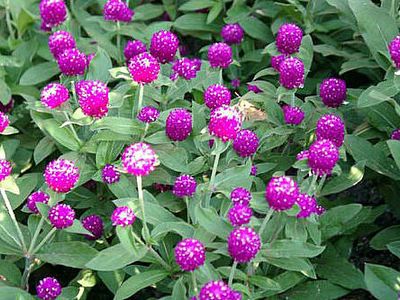Bachelor Button Seed for Sale
When we planted our Bachelor Buttons last March, we had no idea how many people would contact us asking for a source for seeds. We are happy to announce that for a limited time we are offering Bachelor Button seeds for sale.


Some common names include globe amaranth, gomphrena, and bachelor's buttons. They are related to other Amaranth family members such as Love-lies-bleeding (Amaranthus caudatus) Joseph's Coat (Amaranthus salicifolius) and the tumbleweed (Amaranthus albus). The genus Celosia also belongs to this family.
Globe amaranth is an annual bedding plant known for its colorful leaves or inflorescences, that came to us from tropical areas of the Old World. They were used for a long time by the Indians, and are documented as having been a part of early American gardens. In addition to their ease of culture, they were popular with our ancestors for their use as "everlastings."
Nearly all the species of this genus will retain their beauty for several years if the flower heads are gathered before too far advanced, and hung up to dry. Because of this property they were made the emblems of immortality and immutability in times of old.
Plants grow up to 18 inches tall with a spread of about a foot. The branched stems are erect and stiff and the plant has a bushy appearance. The narrow green leaves are opposite, oblong, 4-6 inches long, and woolly-white when young, becoming sparsely white-hairy as they age. Taller plants may need staking.
No serious insect or disease problems. Few insects seem to bother Gomphrena but occasional loss occurs from root rot. Good drainage is essential but little fertilizer or water are necessary to produce a massive display. Although mature plants exhibit good drought resistance, plants grow best with regular moisture throughout the growing season.
Globe Amaranthus (Gomphrena globosa)
Flowering Season: Late spring to early fall
Light Requirements: Sun to partial shade
Flower Color: Purple
Height: 12 to 24 inches
Spacing: 10 to 12 inches
Comments: High drought tolerance
Price: ⅛ ounce 99¢